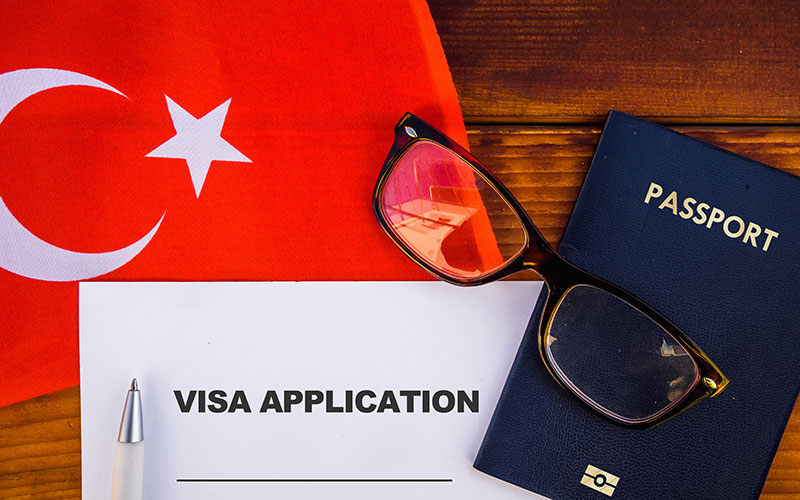Turkey E-Visa Vs Visa on Arrival : Understanding the Difference
Visa on arrival (VoA) and e-visas are two popular ways to obtain entry permits for exploring foreign countries. They both provide convenience yet vary in timing, process, and application. Choosing between the two depends on various factors like destination country regulations, personal preferences for preparation and convenience, and travel plans. Again, those originating from any Turkey visa-free country can tour Turkey via Turkey visa-free entry, thus simplifying the procedure further
Defining E-visa
What is e-visa? This is an electronic visa that can be fully applied for and processed online. Its usage and requirements are similar to that of a regular visa, yet as opposed to the stickers or traditional visa stamps, it is linked to the passport digitally. Should one’s destination country provide e-visas, for instance, in the case of Turkey e-visa, one can apply for it hassle-free using a smartphone without paying a visit to the consulate or embassy. Besides, they can show the same to the customs officer on their phone at the checkpoint. Today, e-visas are accessible to the regions or countries mentioned below.
Understanding Visa on Arrival
Visa on arrival (VoA) is also called a landing visa or visa upon arrival. This visa can be applied for post-arrival at the port of entry. VoA is based on a bilateral agreement that aims to augment short-term excursions between countries such as a Turkey visa on arrival for business meetings, tourism, or family visits covering 30-90 days.
E-Visa Vs. Visa on Arrival : The Difference
E-Visa : This digital visa is processed online before traveling. Its processing time is a couple of days to weeks. Citizens of a majority of countries are eligible for e-visa. Its fee is lesser than traditional fees, and its length of stay comprise 1 month to 1 year and can be extended.
Visa on Arrival is a sticker or visa stamp you apply for at the entry port post-arrival; its processing time comprises a few minutes to some hours. Citizens of some designated countries are eligible for a VoA. Its fee is 0-dozen of dollars, and its length of stay comprises 1 month to 1 year and can be extended.
Application Procedure

The key difference lies here. E-visas are applied online completely, comprising filling out an electronic form, uploading essential documents, and paying the fees online. On the contrary, VoA is obtained at an airport, the destination country’s land checkpoint, or the destination port in person. Regardless of the visa type selected, such as a Turkey single or Turkey multiple entry visa, do ensure you have a valid passport with a specific validity period.
Processing Time
An electronic visa is a digital variant of pre-arranged visa, in the absence of which one is not permitted to board. Though the application process is quicker than for regular visas, it takes about a couple of days or weeks to get one. Thus, it is highly suggestive to apply for e-visas; the sooner, the better.
With regards to VoA, this is obtained post-arrival. The processing duration ranges from some minutes to some hours, depending on the length of the queue and whether one has submitted the requisite documentation.
Eligibility Criterion
Whether a candidate can avail of a visa on arrival or an electronic visa depends on their travel purpose, destination, and nationality. An e-visa is generally a single-entry permit, such as a Turkey single entry visa and is widely applicable. Visa on arrival generally allows multiple entries and is solely accessible for people from specific countries. What is more, E-visa is highly secure. It is highly recommended to obtain an electronic visa well in advance.
Visa Fee
This fee depends on where one is traveling. Usually a landing visa is more budget-friendly than an electronic visa, of which a few are free of charge. An e-visa is cheaper and more convenient than regular visas, yet it may levy additional service fees.
Tips to Consider
- In the case of an e-visa, do apply beforehand to allow processing time, and in the case of a VoA, have all essential information and documents ready prior to landing.
- Stay abreast of the destination country’s policies and visa requirements to avoid delays or surprises.
- Keep all documents handy during your trip.
- As a visa holder, understand your responsibilities and rights, including visa conditions, stay duration, and exit requirements, if any.
- Visa policies keep changing, so remain up-to-date with recent information from reputable travel advisories or official government sources.
Conclusion
Choosing between a VoA and an electronic visa depends on several factors: travel plans, personal preferences, and destination country regulations. Both have their respective pluses and minuses with regard to fees, eligibility criteria, and processing time.
FAQs
Q1. What is the difference between E-visa and VoA?
The former is a digital visa processed online before travel, while the latter is a sticker or visa stamp that is applied at the entry port post-arrival.
Q2. What are the perks of e-visa?
- Can be availed online
- Save time
- Linked to passports digitally
- Highly convenient
Q3. What are the factors to consider while selecting e-visa and VoA?
- Personal preference for preparation and convenience
- Fees
- Eligibility criteria
- Processing time
Q4. How do I apply for a visa on arrival?
This visa is obtained at the destination country’s port of entry. Prepare fees and the required documents to expedite the procedure upon arrival.
Q5. Is an e-visa more secure than a regular visa?
An e-visa provides better security measures because it is linked to a passport digitally, thus reducing the chances of tampering or fraud compared to a regular visa stamp.



